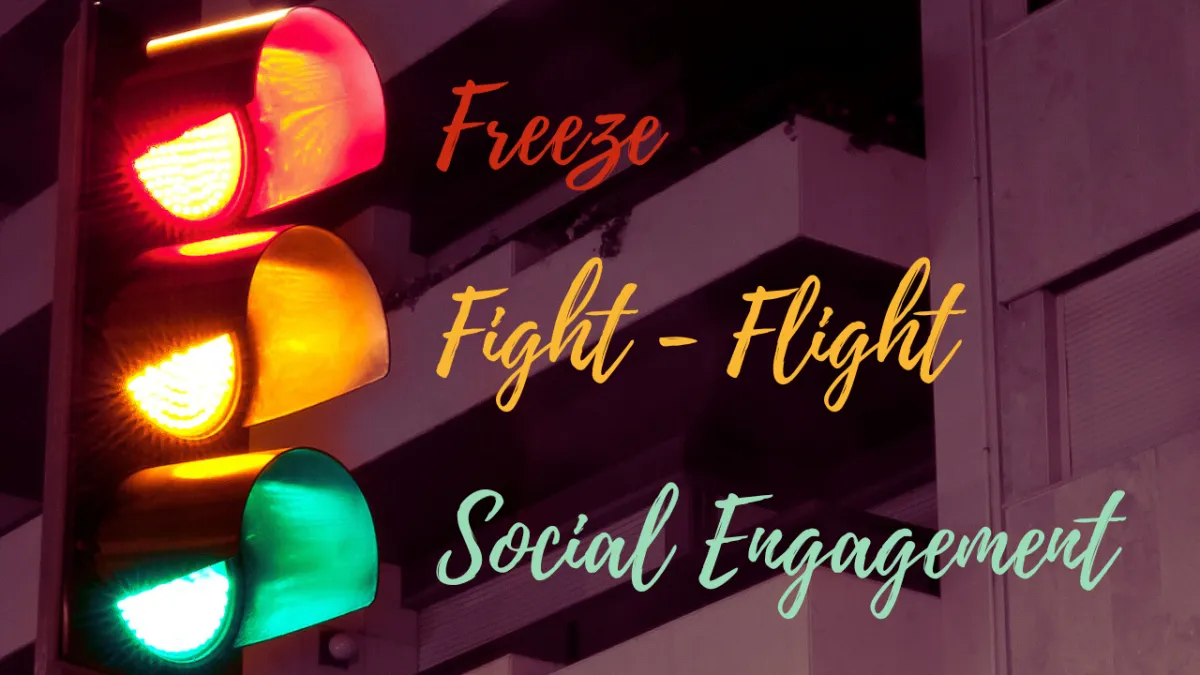Blog

Applying Polyvagal Theory in Trauma Energetic Coaching
Originally posted on February 9, 2024
In the realm of trauma healing and Trauma Energetics Coaching, comprehending the nuances of our body's response to stress and trauma is pivotal. One such nuanced understanding is provided by the Polyvagal Theory, a concept that has revolutionized our approach to trauma recovery. Developed by Dr. Stephen Porges, this theory offers a unique lens through which we can understand the nervous system's role in trauma response and recovery.
This blog delves into the Polyvagal Theory, exploring its significance in trauma work and how it can be effectively integrated into Trauma Energetic Coaching.
The Essence of Polyvagal Theory
At its core, the Polyvagal Theory presents a new understanding of the autonomic nervous system, mainly focusing on the vagus nerve. Traditionally, our understanding was limited to the sympathetic (fight or flight) and parasympathetic (rest and digest) systems. However, Dr. Porges introduced the concept of a 'social engagement system,' a branch of the vagus nerve that plays a crucial role in how we interact socially and respond to stress.
The Three States of Response
The Polyvagal Theory outlines three distinct states of nervous system response:
1. The Ventral Vagal State (Social Engagement System): This is the state of calm and connection where social interaction and engagement occur. It's where healing and growth thrive.
2. The Sympathetic State (Fight or Flight): This is the body's response to perceived danger. It prepares the body for defensive actions, either to fight the threat or flee from it.
3. The Dorsal Vagal State (Freeze or Shutdown): This is a more primitive response, often activated in response to overwhelming stress or trauma. In this state, the body shuts down, conserving energy to survive.
Polyvagal Theory in Trauma Work
Understanding these states is vital in trauma recovery. Often, individuals who have experienced trauma find themselves stuck in the sympathetic or dorsal vagal states. The healing journey is about helping them return to the ventral vagal state, where safety, connection, and healing are possible.
Integrating Polyvagal Theory into Trauma Energetic Coaching
The first step in trauma work, according to Polyvagal Theory, is to establish a sense of safety. This involves creating an environment where the client feels seen, heard, and understood. Techniques such as active listening, empathetic communication, and creating a physically comforting space can help facilitate this.
In Trauma Energetics Coaching, creating a safe environment for our client starts with us, the coach. We strive to be regulated, grounded, centered, and identified with the highest aspect of ourselves (we call the Essential Self) before entering space with our client. When we are anchored into our Essential Self, we are free of self-consciousness and able to be authentically present, attentive, caring, and in a state of receptivity to what our client is sharing.
To achieve this goal, we use techniques like the 3 Step Heart Meditation to connect into our Essential Self. We also teach exercises like the The Healer's Prep and Clearing and the All Systems Go Warm Up as ways to prepare our nervous system and energy system before meeting with a client.
Recognizing States of Dysregulation
Another crucial skill in trauma healing is recognizing the signs of sympathetic arousal (anxiety, agitation) or dorsal vagal shutdown (numbness, disconnection). Identifying these states in clients allows for more effective and tailored interventions.
Equally important is for the client to be able to notice and name the state they are experiencing. In the TEC Certification Program, we use a few different maps of understanding to teach the client how to identify their state, including the Autonomic Ladder from Deb Dana's book The Polyvagal Theory In Therapy. We also use a map called the 5 States Model of the Autonomic Nervous System based on the work of Peter Levine and Eric Walterstorff which I find really helpful for both the client and the practitioner.
Grounding and Regulation Techniques
Grounding exercises can help bring clients from a dysregulated state to a more regulated ventral vagal state. Techniques like deep breathing, mindfulness, and body awareness exercises are powerful tools. Encouraging practices that foster a sense of present-moment safety and grounding can facilitate this shift.
Energy Movement
We are energetic beings. Unresolved trauma is often experienced as over activation or stagnation of our life force energy. The cornerstone of the Trauma Energetics system is about harnessing our life force energy and consciously moving it in a way that is useful and appropriate.
Visit our YouTube channel for examples of Energy Movement Exercises you can use with your clients for grounding and regulation. One of my favorites is called the 3-Step Trauma Regulator, taught by my mentor Laura Fine. It's a simple and quick technique to regulate the system when you're feeling overwhelmed or triggered.
Encouraging Social Engagement
Since the ventral vagal state is about social connection, encouraging clients to engage in safe social interactions can be therapeutic. This could be in group therapy, community involvement, or fostering healthy relationships.
The Somagetics Sanctuary provides a safe place for this type of social connection designed specifically for people striving to heal their trauma patterns. To join our free community and get access to amazing resources and safe social engagement with weekly live calls to here: https://www.skool.com/the-somagetics-sanctuary-7852/about
Empowering Clients
Empowering clients to recognize their bodily responses to stress and teaching self-regulation techniques can be transformative. This empowerment helps them regain control over their responses, which are often lost in traumatic experiences.
Conclusion
The Polyvagal Theory opens up a new dimension of understanding in trauma work, emphasizing the importance of safety, connection, and bodily regulation. By integrating these concepts into Trauma Energetic Coaching, we can offer more effective support to those healing from trauma. It helps us see trauma recovery as a holistic journey involving the body, mind and energy system.
References
1. Porges, S. W.** (2001). The polyvagal theory: Phylogenetic substrates of a social nervous system*. International Journal of Psychophysiology, 42(2), 123-146.
2. Dana, D. (2018). The Polyvagal Theory in Therapy: Engaging the Rhythm of Regulation. W. W. Norton & Company.
3. Porges, S. W. (2017). The Pocket Guide to the Polyvagal Theory: The Transformative Power of Feeling Safe. W. W. Norton & Company.
4. Levine, P. A.** (2010). In an Unspoken Voice: How the Body Releases Trauma and Restores Goodness*. North Atlantic Books.
5. Van der Kolk, B. A.** (2014). The Body Keeps the Score: Brain, Mind, and Body in the Healing of Trauma*. Viking.
6. Siegel, D. J.(2010). Mindsight: The New Science of Personal Transformation. Bantam.


